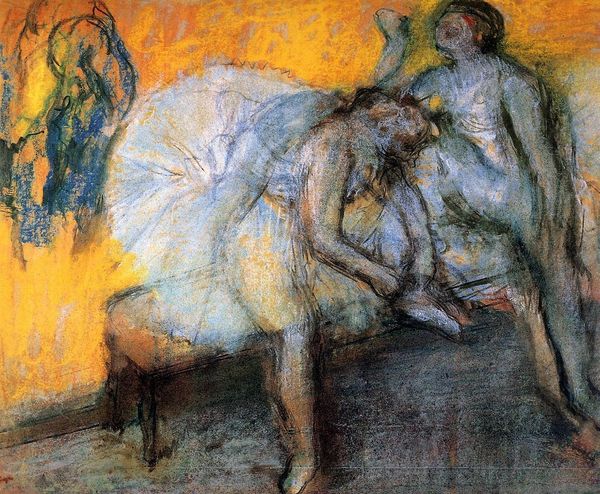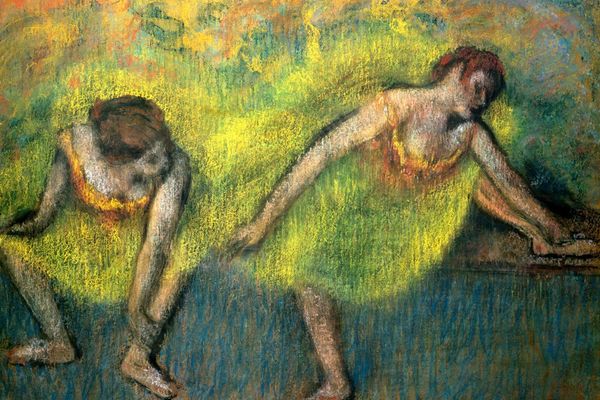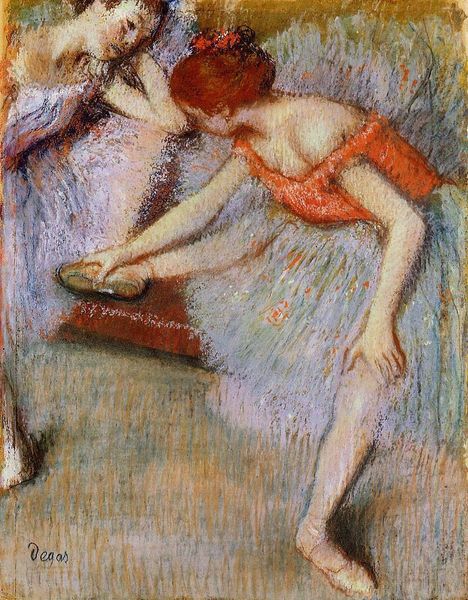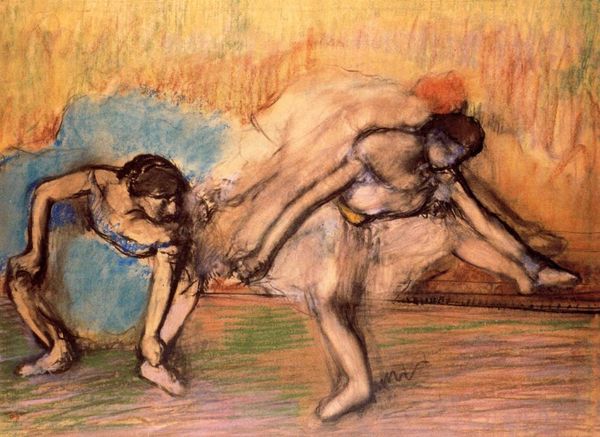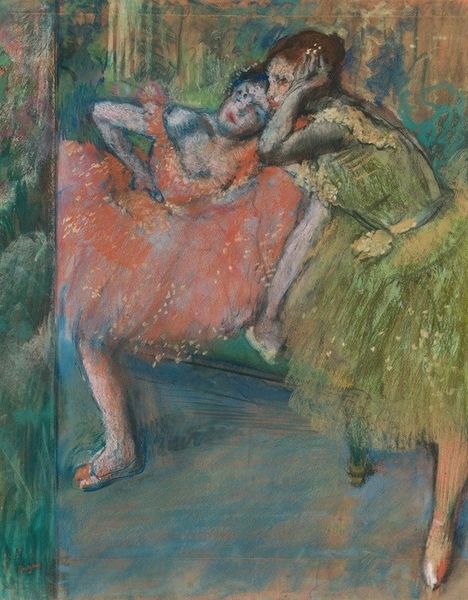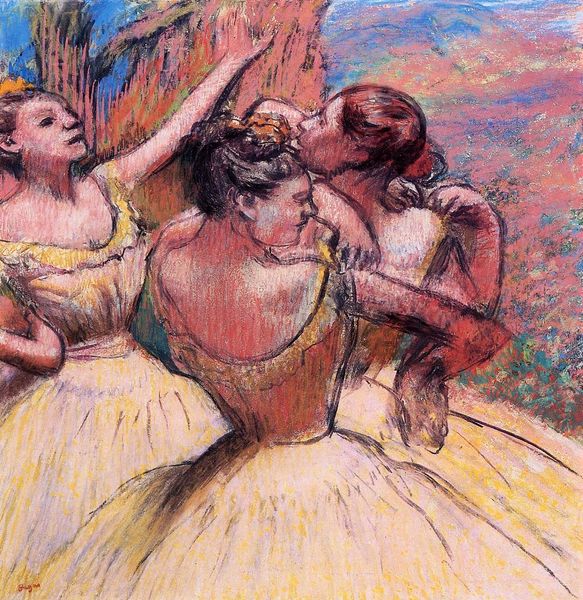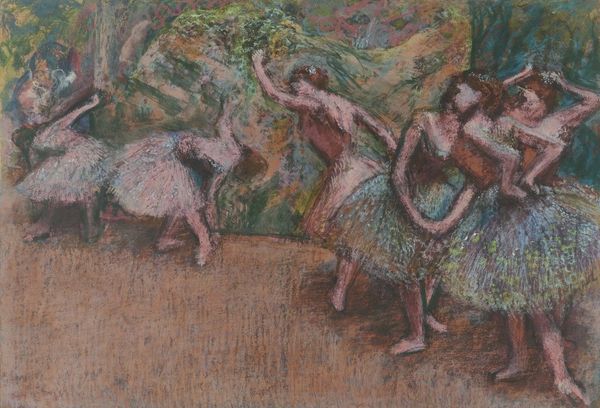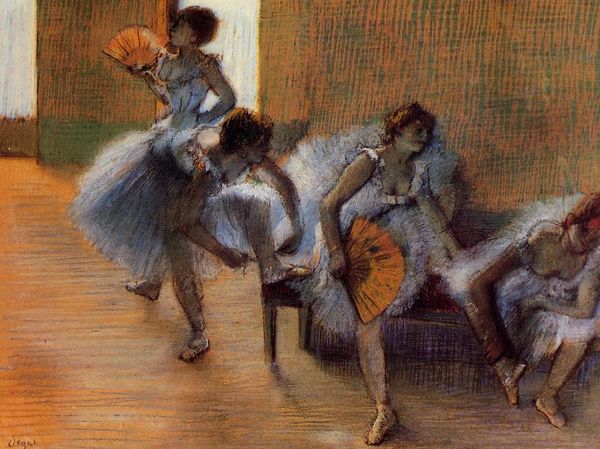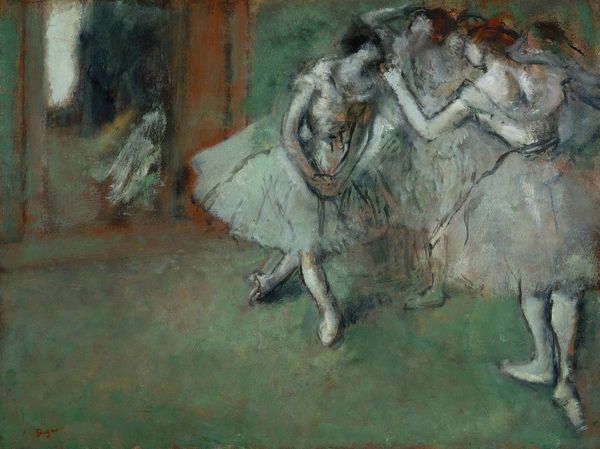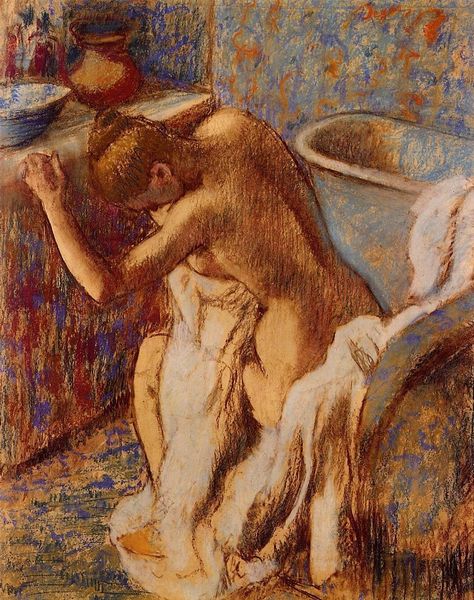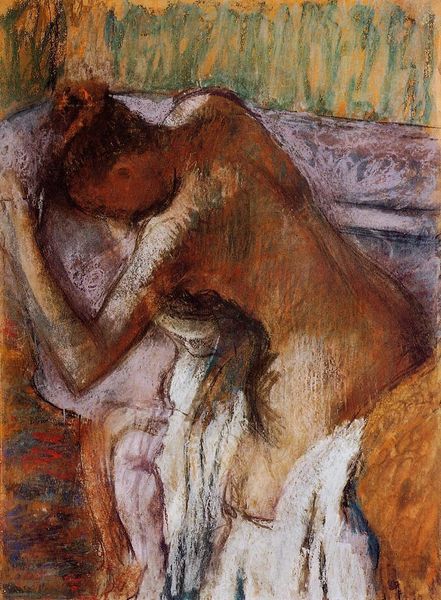
Copyright: Public domain
Editor: Here we have Edgar Degas' "Two Dancers on a Bench," created around 1905 using pastel. The subdued colors and the dancers' weary poses give it a rather melancholic feel, wouldn't you say? What strikes you about the composition? Curator: Initially, the arrangement of the figures calls for a Formalist approach. Observe how Degas juxtaposes the two dancers: one hunched over, seemingly defeated; the other draped languidly. Their shapes and their positioning vis-à-vis each other create a poignant contrast. What do you notice about Degas' use of line and color to convey the scene’s tone? Editor: The lines aren’t sharp; they're blurred, almost like a hazy memory. And the color palette, the muted oranges and greens, they don't exactly scream energy. They contribute to that subdued mood I felt. Curator: Precisely. Degas manipulates the pastel medium masterfully. See how the hatched strokes build volume and texture while simultaneously fragmenting form, almost dissolving the dancers into the ambient space? There's a tension created between representation and abstraction, wouldn't you agree? Editor: Yes, definitely. It’s there, but it doesn't quite let you grasp anything concretely. It seems almost intentionally vague and imprecise, while capturing the atmosphere. How important is this kind of open composition for you? Curator: This imprecision—if one might even call it that—isn’t a defect, but a calculated choice. It forces the eye to construct its own image and thereby heightens one's interpretive engagement. Think, for example, of how Degas uses lines to almost imply a continuation beyond the canvas, leaving much unsaid, yet intensely felt. We look for visual syntax but instead we face suggestion. Editor: That's interesting! I initially saw the melancholy, but now I appreciate the active role it invites from us, the viewers, in constructing the image. Curator: Indeed, what you initially read as merely representational may become profoundly experiential once one decodes Degas' manipulation of form and material.
Comments
No comments
Be the first to comment and join the conversation on the ultimate creative platform.
